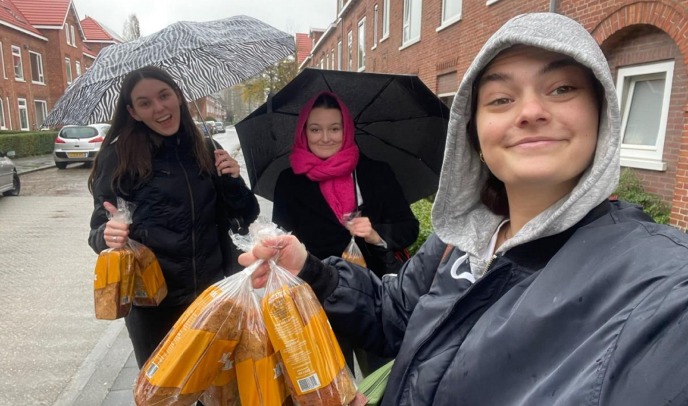Oranjewijk - Living toghether, researching together
The Oranjebuurt and Noorderplantsoenbuurt are two neighborhoods within the Oranjewijk, located in the northwest of Groningen. Together, the neighborhoods have around 6,400 residents. Each has its own unique demographics, challenges, and character. Research by the municipality (for example the Buurtkompas neighborhood monitor) indicates that social cohesion in both areas is declining. But what exactly is causing this? What factors are contributing to the trend?
Students from the Communication and Information Sciences program went into the neighborhoods with surveys to explore the state of social cohesion. In total, 594 questionnaires were completed. The survey topics were based on input from residents and community partners, a group of whom were represented in a research committee.

Results
The surveys included questions about demographics, contact with neighbors, and awareness of local neighborhood organizations.
Based on the research, several recommendations were made, such as organizing neighborhood-wide initiatives, improving the visibility of the community center, and creating more spaces for residents to meet. It’s also important to pay attention to families and young starters to keep the neighborhood diverse and vibrant.
The results of the research have been shared with neighborhood associations and other stakeholders.
Summary of the brochure:
-
The Noorderplantsoenbuurt has a higher proportion of young people, while the Oranjebuurt has relatively more older residents.
-
40% of residents have lived in the neighborhood for less than 4 years, while 25% have lived there for over 25 years.
-
The study shows that social cohesion in the Oranjewijk is relatively strong, but there is room for improvement. For example, 70% of residents say they would trust a neighbor with their house key, but only 37% to 41% feel there is frequent contact with other neighbors.
-
Awareness of local organizations such as WIJ Groningen and the neighborhood centers could be improved; for example, only one-third of residents are familiar with the community center on Prinsesseweg.
-
Residents report the main issues in the neighborhood as student-related disturbances, traffic congestion, parking problems, crime, and litter.
-
Around 9% of residents experience financial concerns, especially among young people aged 16 to 25.
-
Despite these concerns, there are also many ideas and initiatives aimed at making the neighborhood more welcoming and connected. Residents suggest social events like gatherings, barbecues, and street parties as good ways to bring people together. There is also a desire for more green spaces and accessible meeting places like De Huiskamer.
-
Attention to international residents is also important; approximately 14% of the surveys were completed in English, and some residents indicated that bilingual communication would be appreciated.
If you would like to know more about the background of this research or have a question about the project or the brochure, feel free to contact us at wewi@rug.nl.
